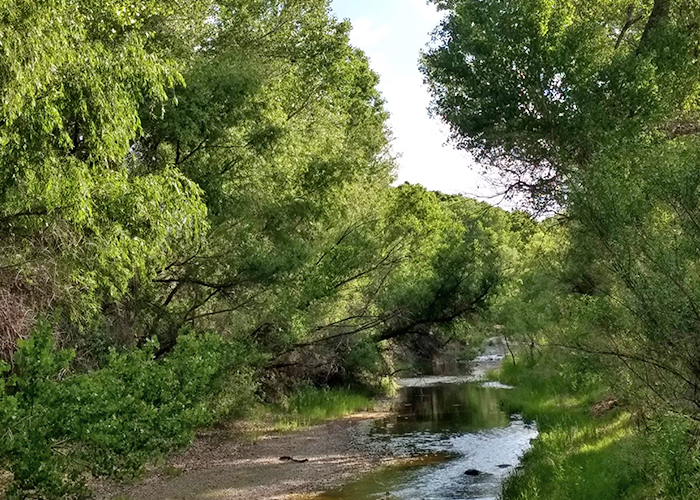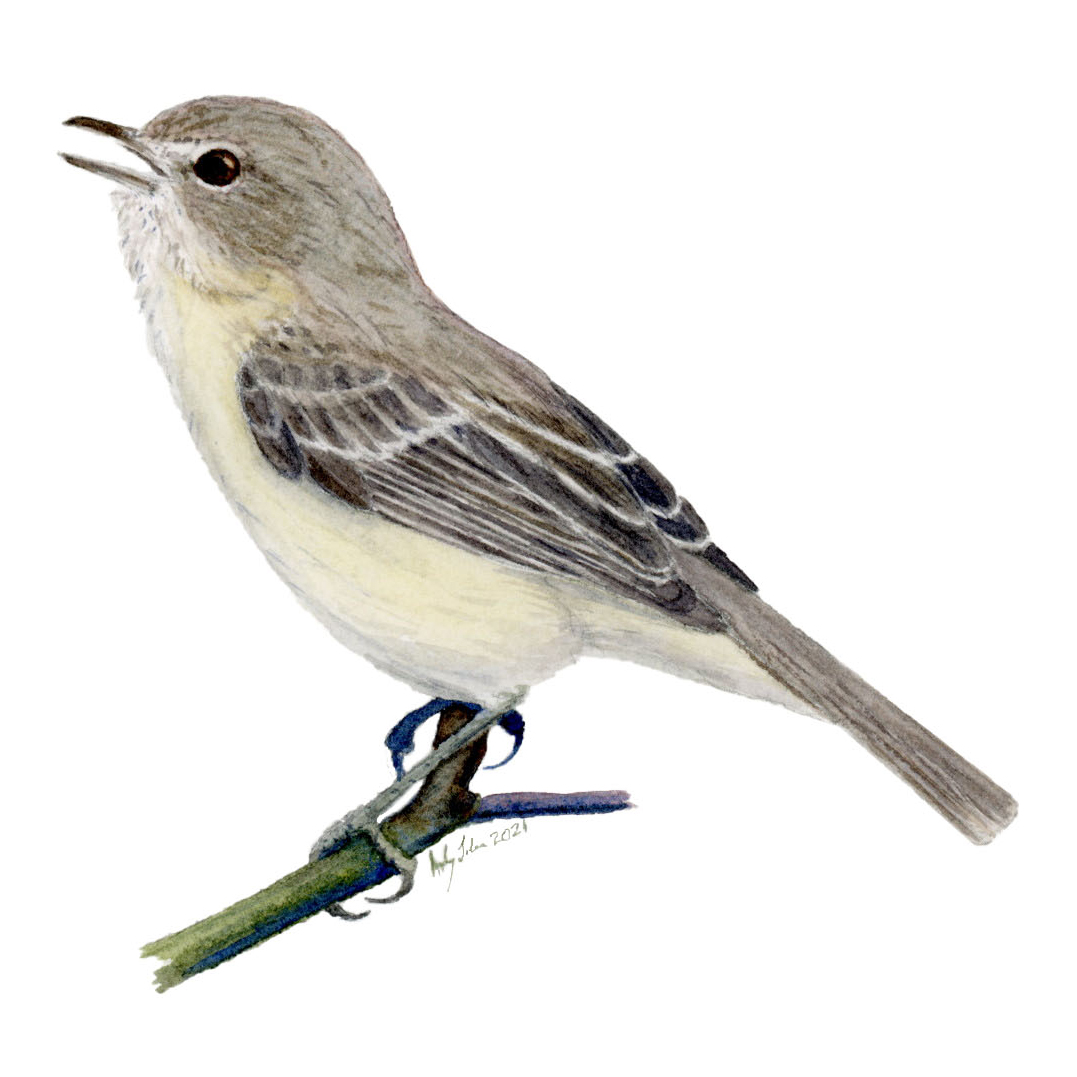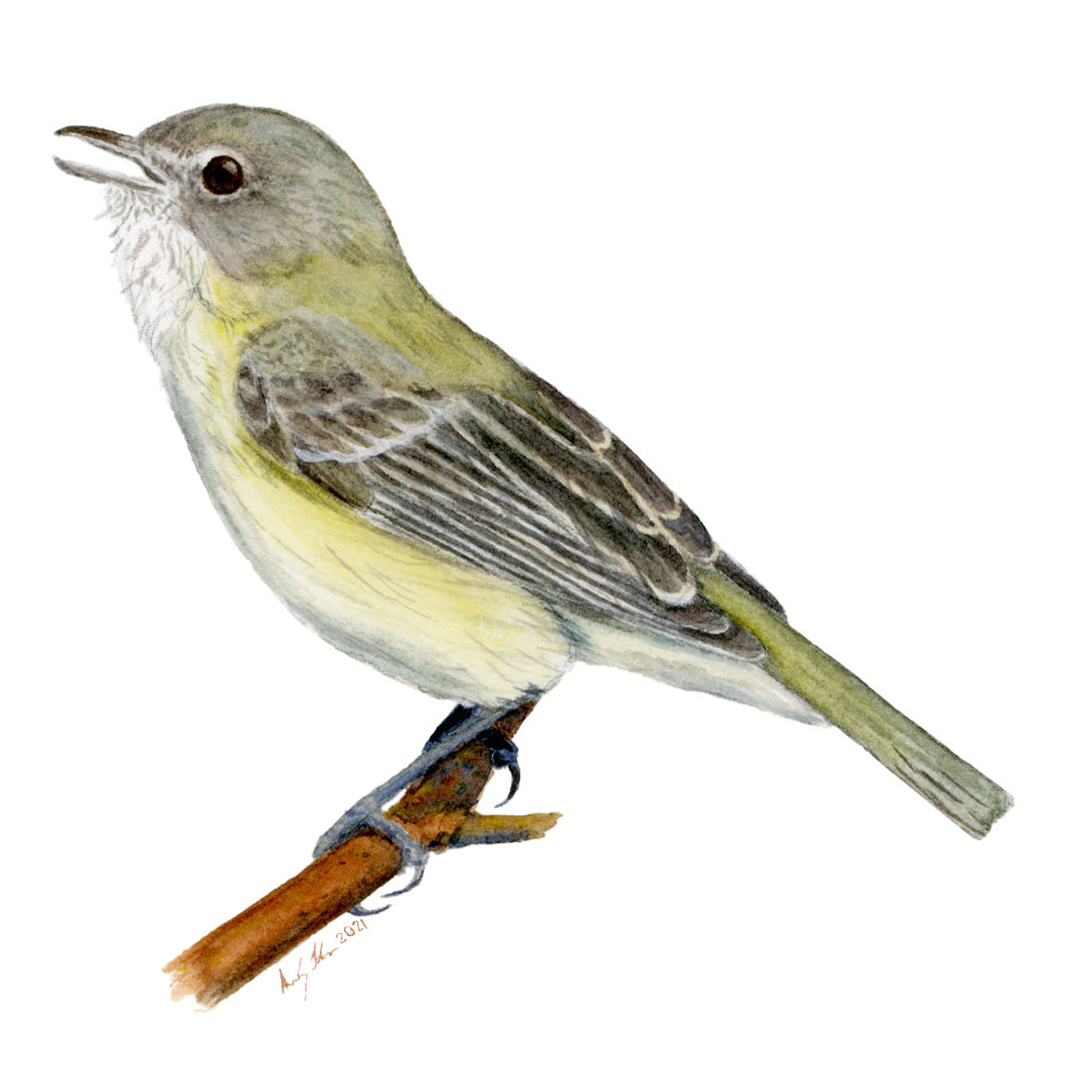Following is a selected project highlight from the Share with Wildlife mission to assist all New Mexico wildlife in need, no matter what species.
The Tale of (Potentially) Two Species of Bell’s Vireos

Bell’s Vireo habitat on the Mimbres River. (Andy Johnson)
One bird you may have heard, if not seen, if you spend time in dense thickets along the Rio Grande or the Pecos or Gila rivers is the Bell’s Vireo. There is an interesting question associated with this threatened songbird: are there one or two species of Bell’s Vireo? Previous assessments have shown that eastern and western populations are distinct genetically and morphologically, but samples from New Mexico were not included in that analysis. Andy Johnson and others at the University of New Mexico in the Museum of Southwestern Biology, using funds from the Share with Wildlife program at New Mexico Department of Game and Fish, are trying to resolve this issue once and for all. They are adding more samples from Bell’s Vireo specimens from New Mexico to previous assessments of the genetics of this songbird across its range in the United States and conducting a detailed morphological assessment.

Bell’s Vireo illustration; Arizona subspecies. (Andy Johnson)

Bell’s Vireo illustration; Texas subspecies. (Andy Johnson)
Andy and his team pulled 20 specimens from existing museum collections, 11 from the Rio Grande Valley and three each from the Mimbres, Pecos, and Gila rivers. Genetic analyses are still underway but preliminary results indicate that birds in the Gila River drainage have genetic similarities to the subspecies found in Arizona, while birds in the Pecos River drainage have similarities to the subspecies found in Texas. However, birds in the Rio Grande Valley appear to be a mixture, with some similar to the subspecies typically found in Texas and some to the subspecies found in Arizona.
Morphological assessments showed that birds in the Gila drainage tend to have longer tails than those in the Pecos drainage, but there is overlap between birds sampled in different drainages. Color was less clearly variable among drainages, though the birds in the Pecos River drainage were generally brighter than those in the Mimbres River drainage and birds from the Rio Grande were fairly variable. These initial results indicate that the population of Bell’s Vireos along the Rio Grande may represent a hybrid between the two different subspecies; but further analyses will tell us more.

